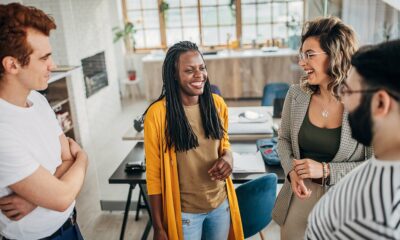The following is a selection from the e-book “MarTech’s agile marketing for leaders.” Please click the button below to download the full e-book.
It’s important to say “no” to work that’s not valuable. Through planning, the team should have a good sense of what the business priorities are and what they’re trying to achieve. Therefore, when pet projects come in that aren’t aligned with those goals, the team needs to be empowered to push back. The same goes for planned deliverables that don’t perform well with customers or prospects. The team becomes expert at understanding what is working and what isn’t, so listening to them is an important aspect of creating an agile culture.
If you’re used to asking for work from the team, think about how you’ll feel if they push back? Can you accept those responses? What kind of data or information would you like to see to feel comfortable that they are justified in saying no?
Read next: A new way of marketing planning: At the last responsible moment
This will take a lot of trust on your part, so if trust isn’t there today, think about what steps you need them to take to gain your trust. Then communicate this trust directly to them.
At the end of the day, an agile team is responsible for delivering value to customers, not to internal stakeholders. They must be able to field any requests, but in the end be empowered to do the right thing for the external marketplace.
Consultants, not order takers
Traditionally, marketers have been focused on output. Work requests come in and then they are delivered upon. Most of the time there is a big separation between those asking for the work and those delivering the work.
In agile marketing, this needs to be a collaborative way of working. To begin with, business leaders need to lead with their desired outcome, not what piece of collateral they need.
The team should have the creative liberty of figuring out what work is needed to achieve that outcome and experimenting with different mediums should be part of the process, not just fulfilling predictable and static orders.
Your marketers are really smart, creative people and will be much happier in their role if they don’t just design content or write copy, but are truly part of the consultative process. Figuring out what’s needed is really valuable, so make sure to give that ownership to the agile team.
Get the daily newsletter digital marketers rely on.
Being transparent
When you start agile marketing, you’ll really notice how transparent the process can be. Everyone on the team knows what others are working on, and anyone else should be able easily to look at whatever marketing work management platform you are using and see in real-time what’s happening. The backlogs and roadmaps are collaborative too, so work is much more out there in the open.
However, with this newfound transparency, you may also find that some existing problems are finally bubbling up to the surface. It may be easy to blame agile for causing these problems, but agile merely exposes them.
Read next: 7 leadership behaviors for marketing agility
A company that I worked with that was just starting agile marketing was shocked to learn that they had already committed to five years worth of work to their business stakeholders! It wasn’t agile marketing that did that — it was already there all along, but when they put their work into a single marketing backlog and estimated the effort, this suddenly became an obvious problem. That left them with a choice to make — hire more people or decide what work they weren’t going to do.
Focused efforts
One of the beautiful things about an agile marketing team is that people can make a more focused effort. The team should have a focus for their work, such as a single product, a part of the customer journey or a business value stream.
While getting the team to have a focus is fairly easy, limiting staffers to working with only one (maybe two at the most) project teams can be a bigger challenge. The reason this becomes a challenge is people are traditionally hired for a very narrow skill set, and if the designer is the only one that can design, you end up either needing one for every team member or, if you don’t have enough, splitting that person across many teams.
You can resolve that problem by making team members work more as generalists than specialists (they won’t be experts at everything, but will be allowed to go beyond their HR title) — or by beefing up your staff. But neither of those ideas are great for agile marketing. The truth is, the more focused people can be on a team, the better results of agile marketing you’ll see.
Beyond dedicated team members, you need to think about how many campaigns or projects the team is working on at the same time, because there is a really big cost to context switching.
When I go to write an ebook like this, I need at least an hour of uninterrupted time. If I could have the whole day, that would be even better — my thoughts freely flow onto paper and I get into the writing groove. However, that really never happens, so every time I stop and start again I have to reread what I already wrote and remember what I was going to say next. That inherently makes for a much slower process than if I can fully focus for extended periods.
As you can see by the chart below, someone working on five projects at a time (which let’s face it, is really a low number in the marketing world), loses 75% of their time by jumping around from task to task. My husband was recently working on more than 10 different client projects and his head nearly exploded!

Opinions expressed in this article are those of the guest author and not necessarily MarTech. Staff authors are listed here.
















![YouTube Ad Specs, Sizes, and Examples [2024 Update] YouTube Ad Specs, Sizes, and Examples](https://articles.entireweb.com/wp-content/uploads/2024/06/YouTube-Ad-Specs-Sizes-and-Examples.jpg)















You must be logged in to post a comment Login